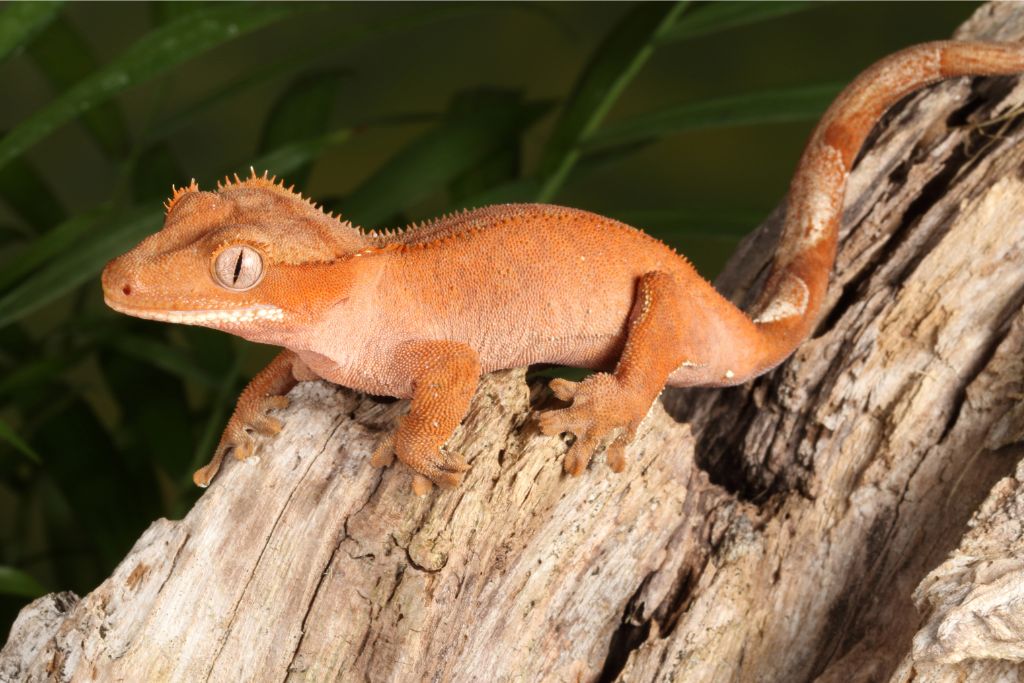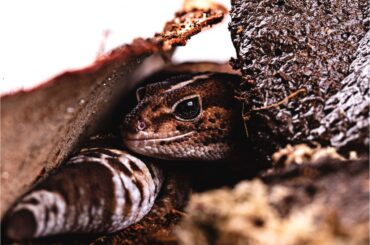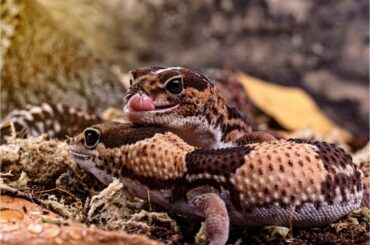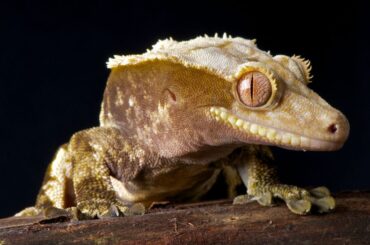Do crested geckos, with their unique crests and sticky toes, pee? It’s a question that might not cross our minds often, but the answer unveils some intriguing insights into these unique reptiles.
Considering how these little buddies seem to lead such secretive lives, it’s a curious thought.
When it comes to reptiles, we might have a preconceived notion that they don’t quite “go” like our furry friends do.
But did you know crested geckos challenge this belief with their unconventional urination habits? That’s right. These enchanting creatures have a unique way of dealing with waste that might leave you in awe. Unravel the secrets behind crested geckos and their not-so-ordinary urinary routines.
The Physiology of Crested Geckos
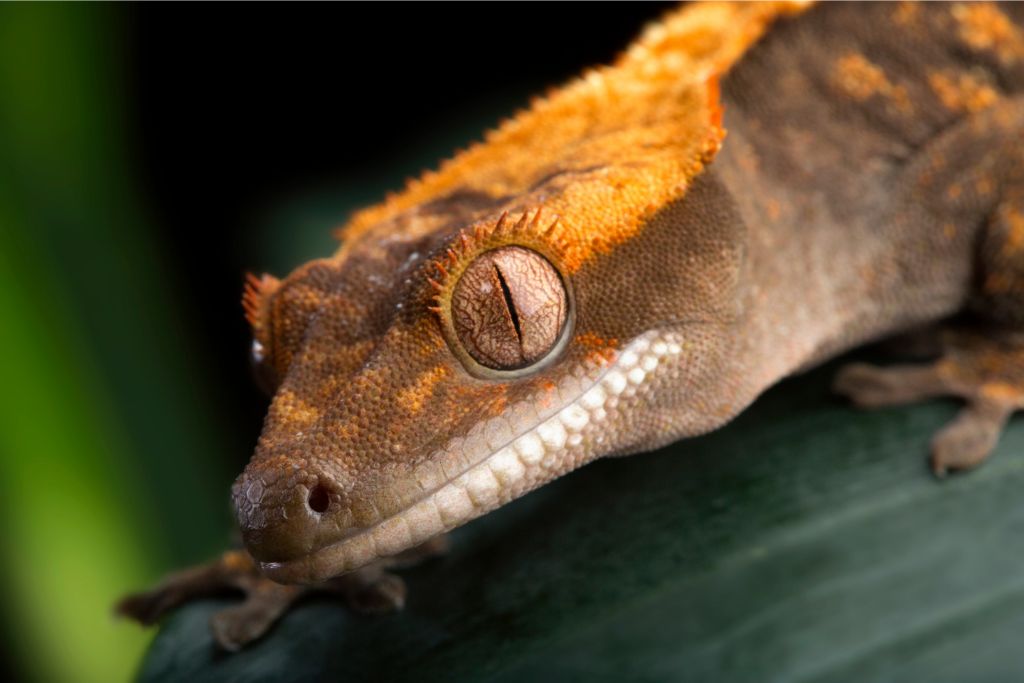
Crested geckos are fascinating creatures with some cool features! One of their standout traits is their unique physiology. They climb tropical trees with special toe pads that resemble Velcro, unlike other geckos.
When it’s hot and feeling a bit thirsty, they don’t sweat it out. They have unique skin scales that help keep the water inside, like a natural water bottle. So they stay cool and hydrated without breaking a sweat!
Their kidneys, those tiny bean-shaped, play a crucial role. These little guys don’t just filter out waste; they’re also like water regulators. When the gecko sips on some water, the kidneys kick in to ensure the precious liquid stays put.
Do Crested Geckos Urinate?
Crested geckos, those fascinating little climbers, indeed urinate, and they do so uniquely. In contrast to mammals, crested geckos urinate and defecate through the cloaca. This might surprise some, as we’re used to creatures having distinct methods for dealing with solid and liquid waste.
Some people may think crested geckos don’t urinate, possibly because they don’t see a separate stream like in mammals. The truth is crested geckos eliminate liquid waste, but it often blends with their solid waste, making it less noticeable.
Understanding this unique aspect of their biology helps us appreciate the diverse ways animals manage bodily functions. The next time you see your crested gecko doing its business, know that it’s a natural and necessary part of their routine.
Factors Affecting Crested Gecko Urination Patterns
Ever wonder why crested geckos have different urination patterns? Here are fascinating factors that can influence how often these cute creatures produce urates:
Diet
The food your crested gecko eats directly impacts its urination habits. A balanced diet of insects, fruits, and powdered supplements promotes digestive health and urine frequency.
Hydration
Just like us, crested geckos need to stay hydrated. Providing fresh water regularly ensures proper kidney function, impacting urate production. Lack of water can lead to concentrated urates and potential health issues.
Temperature
The environment your gecko lives in matters. They are maintaining a suitable temperature range in their habitat aids in digestion and metabolism, affecting urination. Extreme temperatures can stress them, altering their urinary habits.
Comfort and Stress
Crested geckos, like any living creature, can feel stressed. Changes in their environment, handling, or the presence of other pets can contribute to stress, influencing urination patterns. A comfortable and secure habitat promotes regular habits.
Health Check-Up
Regular veterinary check-ups are essential. Health issues like kidney problems or infections can disrupt urination patterns. A vet can guide you in maintaining your gecko’s health and addressing any underlying concerns.
Understanding Urates: What are They?
In your gecko’s environment, you may come across urates, which are odd, chalky rocks. Compared to the liquid urine we’re used to, urates have some key differences. While urine is primarily liquid, urates are like the gecko’s way of saying, “I’m saving water!”
Urates have this cool, white, chalky appearance, almost like someone sprinkled powdered sugar in the gecko’s potty. This is because urates are made up of waste materials that the gecko’s body doesn’t need, all bundled up in a way that helps them hold onto precious water.
Why are urates a big deal for geckos? These little chalks help geckos conserve water. In the wild, where water might only sometimes be easy to find, geckos must be smart about hydration. By forming urates instead of releasing all liquid, geckos can keep more water inside them.
Pee vs. Urates
Crested gecko enthusiasts argue over whether their urates are urination. Some say that urates, often found alongside gecko feces, should be considered a type of urine. This viewpoint suggests that geckos release liquid urine and urates as separate waste components.
Experts in the field add valuable perspectives to this discussion. Reptile researchers say urates are concentrated urine with solid components that help reptiles preserve water.
Researchers say crested geckos, like many reptiles, have adapted to their environment by excreting waste efficiently. This supports the idea that urates and liquid urine serve distinct purposes in the gecko’s waste elimination process.
Observing Your Crested Gecko’s Bathroom Habits
Keeping an eye on your crested gecko’s bathroom habits is essential for their well-being.
Explore some simple yet effective ways for pet owners to keep track of their gecko’s bathroom routine:
Check for Regularity of Secretion
Keep an eye on your gecko’s bathroom routine. Regularity in their bathroom visits is a good sign of a healthy digestive system. If you notice any sudden changes, it could be a signal that something needs attention.
Look for Changes in Feces Appearance
The appearance of your gecko’s feces can provide valuable insights into their health. Healthy feces should be well-formed and without any unusual colors or odors. Any drastic changes require a visit to the vet.
Monitor Eating and Drinking Habits
A gecko’s bathroom habits are closely linked to their eating and drinking patterns. Ensure your pet eats an appropriate diet and has access to fresh water. Any changes in appetite or hydration levels can impact their bathroom behavior.
Create a Comfortable Bathroom Area
Make sure your gecko’s habitat includes a suitable bathroom area. Having a place to discharge themselves encourages natural behavior and makes monitoring easier.
Maintain an Ideal Habitat
A well-maintained habitat is crucial to your gecko’s overall well-being, including their bathroom habits. Ensure the enclosure is clean, with proper temperature and humidity levels. A comfortable environment encourages your gecko to exhibit natural behaviors, including regular bathroom visits.
Use Substrates Wisely
Choose substrates that facilitate easy waste removal and cleaning. This cleans the habitat and helps you notice strange bathroom habits in your gecko.
Common Bathroom Behavior Concerns
Sometimes, you notice variations in urate production. This is normal and can be influenced by factors like diet and hydration. Let’s dive into the common concerns and demystify what’s going on!
Frequency of Bathroom Visits
If your gecko isn’t using the bathroom every day, don’t panic. Just like humans, their bathroom habits can vary. Factors like age, size, and individual preferences play a role. If your gecko is active and eating well, irregular bathroom trips are usually nothing to fret about.
Color Changes in Urate
Are you seeing variations in urate color? It’s okay! Different shades of white and yellow are normal, depending on diet and hydration levels. If you notice drastic color changes, like red or orange, it’s time to pay attention. This could signal a potential health issue; consulting a vet is the best action.
Consistency of Urate
The texture of urate can vary, and it’s usually nothing to worry about. However, persistently runny or hard urates may indicate dehydration or a health issue. Ensure your gecko has access to fresh water, and consider adjusting its diet to include more hydrating foods.
Conclusion
Crested geckos exhibit fascinating urinary habits that challenge common perceptions about reptiles. Unlike mammals, they urinate and defecate through the cloaca, blending liquid and solid waste. They eliminate waste using their unique physiology, water-saving adaptations, and renal functions.
Responsible pet ownership requires understanding crested gecko urine patterns, including diet, hydration, temperature, and stress.
FAQs
Do Crested Geckos Pee Liquid?
Yes, crested geckos excrete liquid waste, commonly called “crested gecko pee.” The liquid waste is a combination of urine and urate.
Why is My Crested Gecko Peeing But Not Pooping?
If your crested gecko is peeing but not pooping, it could be due to various reasons, such as stress, diet changes, or dehydration. Ensure that the gecko has a proper diet, a suitable environment, and access to fresh water to address potential issues. If the problem persists, consulting a vet is recommended.

